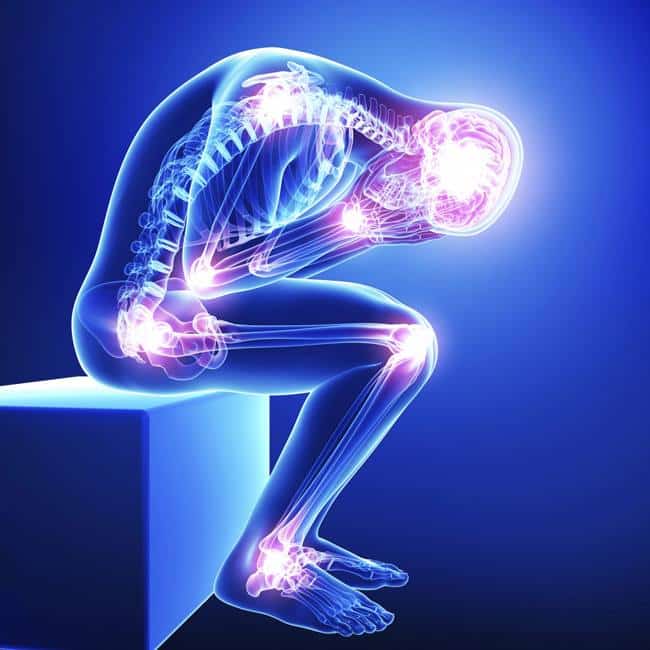Pain… Let’s talk about it!

Are you suffering from pain? Do you know someone who has been suffering from pain?
Did you know that 1 in 5 Australians suffers from what can be classified as chronic, ongoing or persistent pain? This debilitating state can come along with lots of other medical issues- like arthritis, work-place injuries, the after-effects of car accidents, back injuries, post-pregnancy pelvic pain- or it can just develop on its own, without any significant injury. This last type of pain can be one of the most difficult and challenging presentations for any therapist or doctor. So what can you do if you or someone you love fits into one of these categories?
Persistent and ongoing pain is a huge problem for our society, causing billions of dollars every year in lost work & absenteeism, unnecessary medical procedures, significant psychological distress, profound relationship stress and, drug and alcohol addiction.
Pain is a complex and multifaceted concept which causes much of the difficulty in understanding it, both from a patients point of view and from the doctors.
Pain- So what is it?
To get serious about understanding your pain or someone else’s we must always remember that it’s a process that is built into our bodies to serve us. It is the bodies alarm system. It is meant to protect us from actual bodily harm and for the most part, it does this job admirably. Think about the last time you touched something hot- not just warm – like scalding hot – the initial shock and pain jolt, followed by an almost involuntary retraction of the hand or the foot. That’s pain doing its job, protecting you, almost automatically.
Then think about the last time you injured a body part – like spraining your ankle or spraining your back. The initial acute pain – the swelling and the changing nature of how it hurts – initially sharp and piercing, then gradually becoming more achy and stiff. Think of how it affected your movement, restraining you, making you limp, making you feel stiff and slow. That, believe it or not- is pain doing its job too- telling you to slow down, making you take a load off, not to run or move fast. Rebuilding your body from the inside is a complex and difficult thing to do. It takes time. The slower, ache-ier pain is meant to slow you down and make you rest so you can heal. Us humans are particularly bad at this, we tend to soldier on but soldiering on is not necessarily a good thing.
This slower, ache-ier type of pain associated with these injuries is the result of very interesting and complex changes in your nervous and immune system – the messenger system of the body. Understanding that these systems have flexibility in how they can respond to threats is the cornerstone of teaching someone why they might have ongoing pain that is resisting long beyond the injury that initiated the pain. And if you can teach a person why they are suffering pain, sometimes it has a profound effect on how they can cope with the pain.
Our nerves have a kind of volume control – if you heighten someone’s state of being – either through excitement or alarm – you can ramp up the sensation from a region, or from the whole body. Think about this – you are blindfolded, and then someone you don’t know is silently waiting in the room to administer pinprick to some part of your body without warning or instruction. You know it’s coming, but you don’t know where or when which as a result ramps up your body’s protective sensation. The fact that you also don’t know the person ramps it up even further. This is the threatening context that can ramp up a pain experience.
These parlor tricks are illustrative of what goes on in a more profound way when we injure ourselves. When the systems over-alertness goes on for too long in the presence of sustained pressure, whether physical, or psychological, it can become what we talk about as “sensitised”.
This is the process behind most of the pain that persists for months or years.
So what can you do about it?
- Seek out a good GP and a physical therapist like an Osteopath if you have body pain. They need to be someone you trust and can use to help manage the symptoms. Use them. Really talk to them about you pain. A good one will take the time to listen.
- Explore the other reasons you may be suffering. If you have other mental health issues like depression or anxiety, seek out some psychological care. There are Medicare rebates that can make this affordable if you talk to your GP.
- Take action in your life to try and reduce your stresses. And schedule more time to open with people whose company you enjoy and who understand your issue.
- Exercise regularly and gently. Most body related issues including pain get better over time if you get fitter- even just a little bit but don’t overdo it. If you don’t know where to start and you need help an Exercise Physiologist is a great person to seek out. They can help instruct you and progress exercises if you are in the dark about what to do.
- Harm minimise! If you know certain things make your pain worse you must reduce your exposure to them. This can seem harder than it really is. For example, a person says their back hurts when they sit, but they have to sit for work. Obviously, they have to go to work, so the first step would be to get them to time how long they can sit for before it gets painful. Then set an alarm that recurs at that length of time over the entire day. Every time that alarm goes off they should be out of the chair to do some walking or stretching.
Small things do make big changes, so keep going and seek out help for you or your family member who may be procrastinating.
Our team of allied health professionals are here to listen and take the time to get to the bottom of your pain. Call the clinic on 9553 9823 or book online.
Make an appointment.
Use our convenient online booking or contact us direct.


